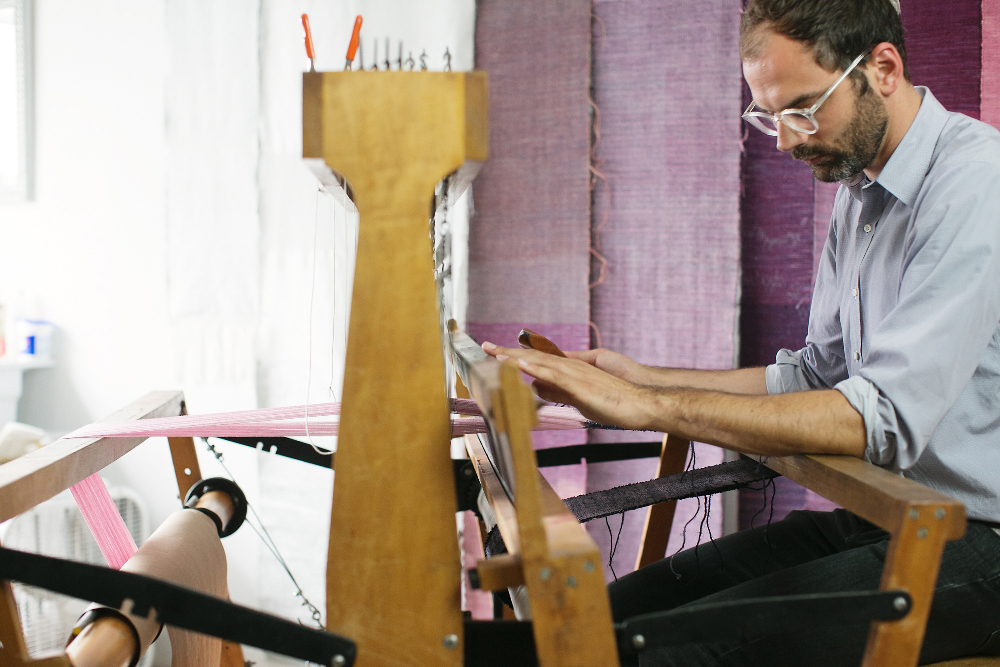
Talking Textiles with Josh Faught
Trompe-l’oeil piano keys, pins and clumsily quilted strips of black and tan crochet are just a few of the things that adorn this San Francisco artist's incredible artworks
Back scratcher? Check. Marijuana home test? Check. Sympathy card? Check. These are just a few of the incongruous items on the shopping list that San Francisco artist Josh Faught has woven into his mixed-media tapestry ‘Party Favors’ (2017). The potpourri of words is mirrored by an equally random assortment of materials: a calendar from a gay community group, trompe-l’oeil piano keys, pins and clumsily quilted strips of black and tan crochet. Taken together, the assortment of camp objects forms a portrait of an ironic individual who is careless but caring, and the viewer is invited either to judge or empathize with the imaginary subject.
Through the medium of fibre, Faught literally and figuratively softens the rigid doctrines and harsh realities that have historically limited queer lives, while simultaneously celebrating the unique pleasures of gay culture.
Activist slogans, confessions and jokes are pinned to his sculptures on badges and shout from their strands. ‘Nobody knows I’m a lesbian,’ confides one work. ‘I’m psychic,’ declares another. And according to one sassy badge, ‘If life is a stage I’d like better lighting.’
Here, the Vitamin T: Threads and Textiles in Contemporary Art featured artist tells us, among other things, about his early-middle-age existential melodrama and what he tells employees at chain fabric stores when they continually ask: what are you making?
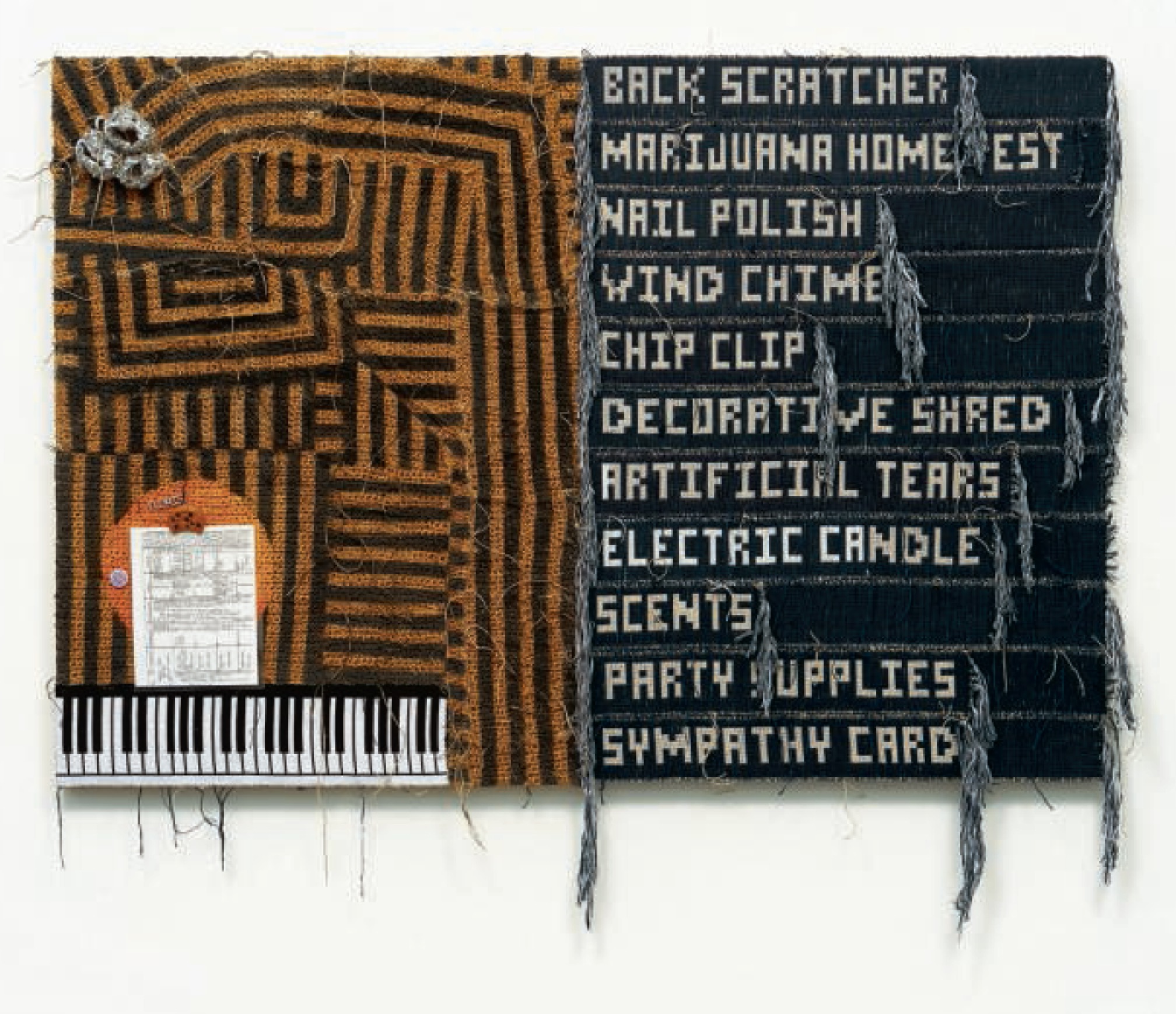
Who are you and what’s your relationship with threads and textile art? Funny you should ask considering that I think I’m currently in the throes of early-middle-age existential melodrama. Here’s what I’ve come up with so far: Gay mind, neurotic body Aries, Pisces, Pisces I’m originally from the Midwestern United States: St. Louis, Missouri. Specifically, I’m from a suburb known as Creve Coeur, which really speaks volumes to my experience growing up there. My parents’ neighbors are convinced that my mom is pumping toxic chemicals into the ground.
My parents are convinced that they’re living next door to a meth lab. I struggle with sweet versus savory binaries. I enjoy long walks on the beach but I was terrified of wind as a young person. People identify me as a weaver, a fiber artist, a textile person: a badge I wear proudly unless I’m feeling contrary. I’m adverse to lists but find myself making them all the time.
What part does the tactility of the material play in your desire to work with it? If political rhetoric is, at its core, a desire to communicate, the ability to speak through textiles allows us to embrace a personal/political continuum that is at once open, fragmentary, experiential, and physical. I understand textiles as a complicated, conditional, and often meandering form of manifesto writing. Etymologically, the word, “textile” is derived from the Latin, texere, “to weave.” This root is also the source of other English words including “context,” “pretext,” and, “texture.”
Similar to the relationship of language to syntax, the synergy between material and structure in textiles allow us to transmit new vernaculars - rich with double meanings, false supports, and anxious potentials. Unlike traditional written manifestos however, I’m invested in the ways that textiles complicate our understanding of address and abstraction. Speaking through textiles changes our means of inquiry and expression.
I’m always asking myself how we can say something urgently through the slowest means possible. And in this slowed down space of making, how does the construction of identity occupy a space that could connect such seemingly antithetical sentiments: desire and ambivalence, making and unmaking, calamity and perseverance?
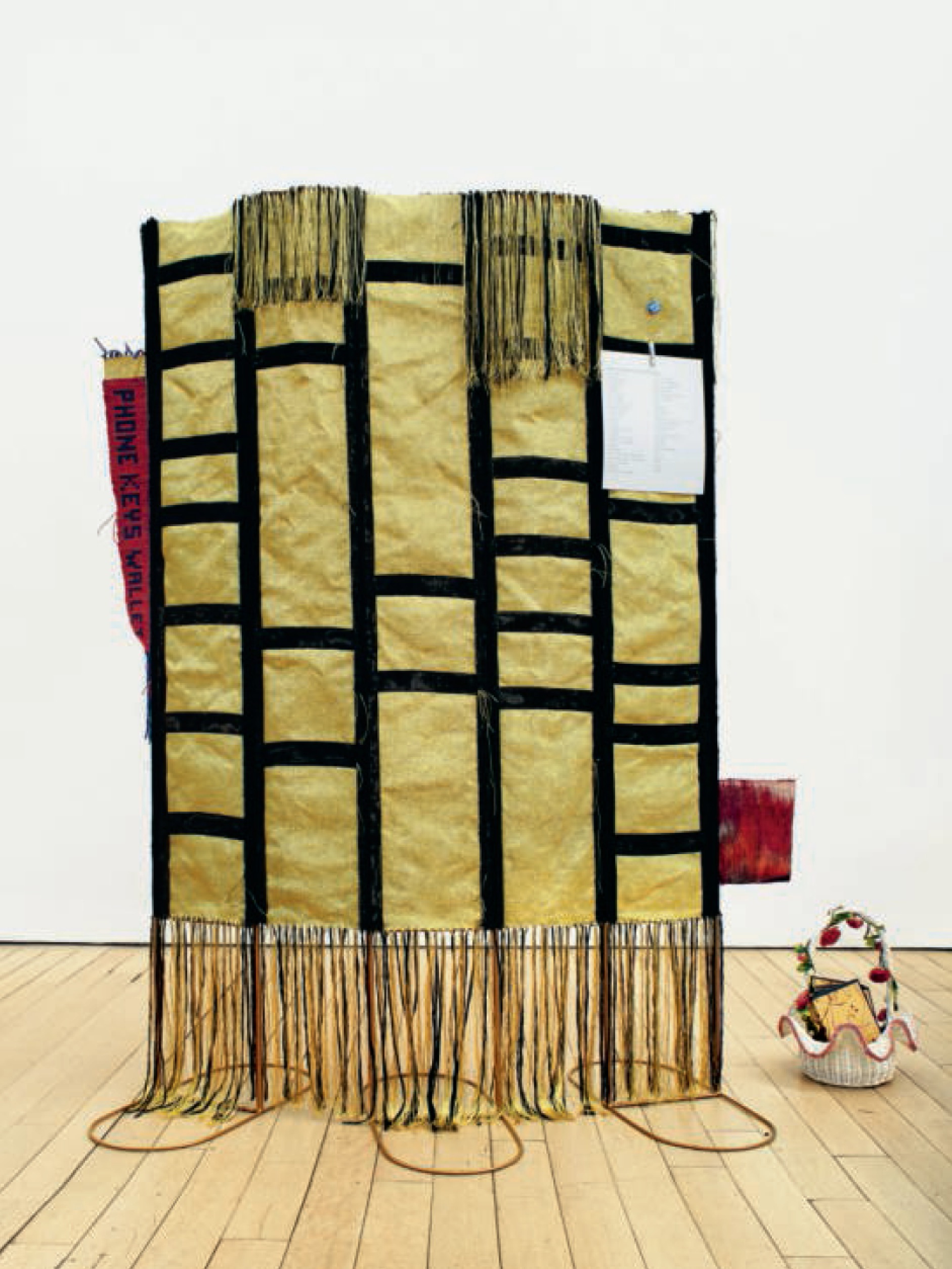
Why do you think there’s an increased interest in textile art right now? Since the new millennium, craft processes in general have experienced renewed interest in both the art world and popular culture. In this regard, materially-based work in exhibitions and art fairs have arguably helped bring previously marginalized histories of process into the mainstream. Perhaps the phenomenon has something to do with an increased awareness of the relationship between what/how we feel and what/how we know it.
I’m also interested in the precarity of textiles: the way an interlaced expression can come completely undone so easily: an aspect of contemporary culture that somehow feels resonant. At the same time however, the cynical part of me recognizes that hand-made objects and experiences have also become apogees of capitalist consumption. All of this to say that despite all the craft caché, the field of textiles continues to exist within a perpetual (and necessary) existential crisis: defining and redefining itself in the face of assimilation and mass culture.
Everyone uses textiles in their daily life, does that help or hinder their standing as a fine art material? It’s strange that the materials around which we surround ourselves are often the least familiar to us. I’m the Chair of a Fine Arts-oriented Textiles program at an art school in the San Francisco Bay Area and the number one question from incoming students is “what’s a textile”? It’s precisely the known unknown of textiles that keeps the material exciting.
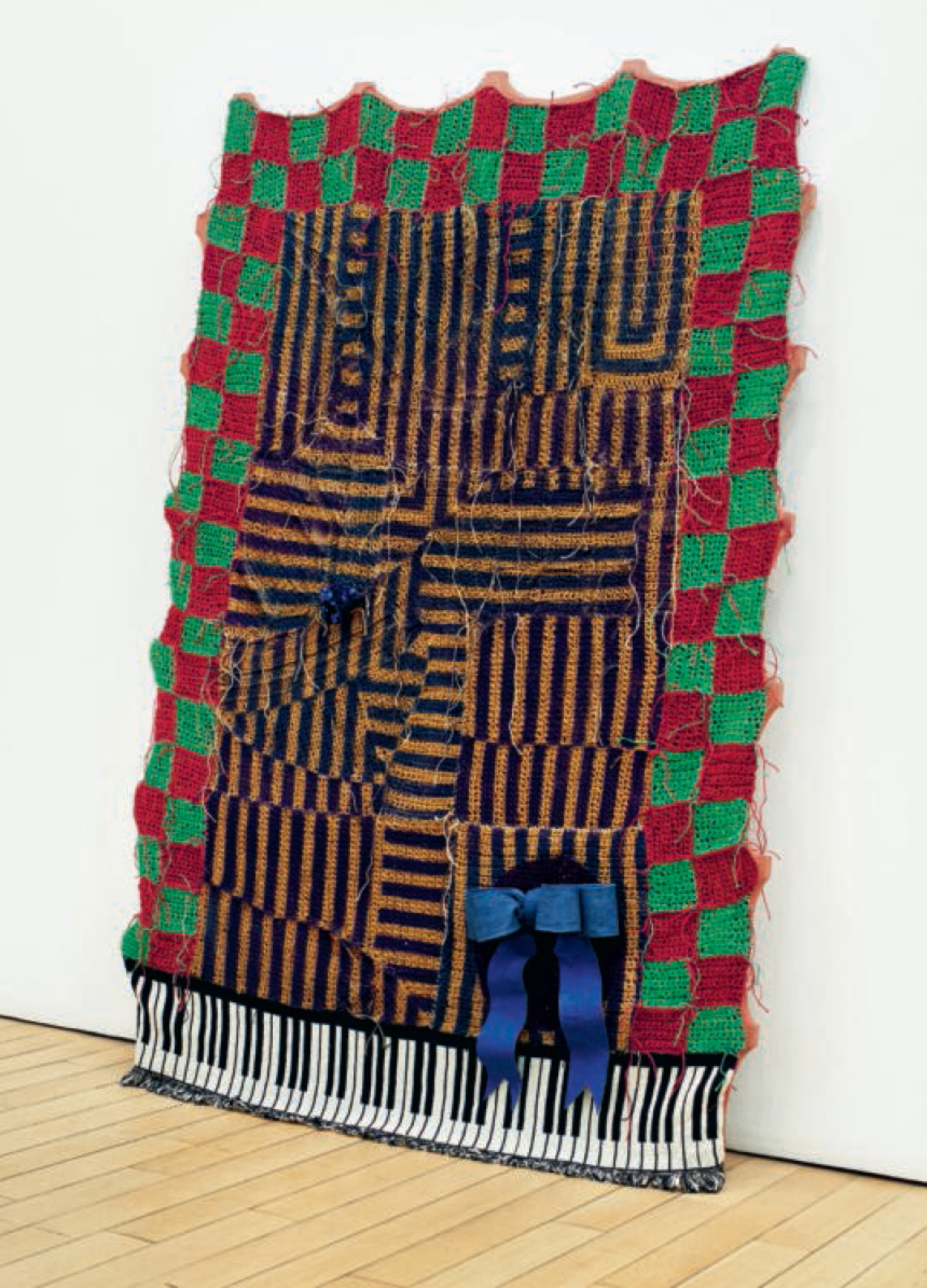
Whose textile art do you admire? When I began my exploration of textiles, I was particularly interested in the work that emanated from the Art Fabric movement: work by artists such as Claire Zeisler, Isolde Savage, and Walter Nottingham. In a moment of historical fantasy, the formal qualities of their work: yarn and masses of otherwise ornamental material oozing and spilling onto the floor, spoke to me as restless political spirits. I was captivated by the literal and symbolic kinds of unraveling that were demonstrated by the presence of these objects. I’m forever influenced by Ed Rossbach’s work, John McQueen’s baskets, Alan Shields, Xenobia Bailey, Barbara Chase Riboud. Jack Lenor Larson: all of whom championed the boundlessness of textile thinking.
What are the particular challenges and rewards of working in this medium? The biggest challenge continues to remain the endless questions from employees at chain fabric stores asking me what I plan to make. Usually, you can overcome any such obstacle by replying, “curtains.”
If I buy textile art how should I care for it? Textiles are like Gremlins. They hate bright lights! Textiles live their best lives when they’re exposed to conditions similar to the most lascivious gay bars: in darkened rooms with blackened windows.
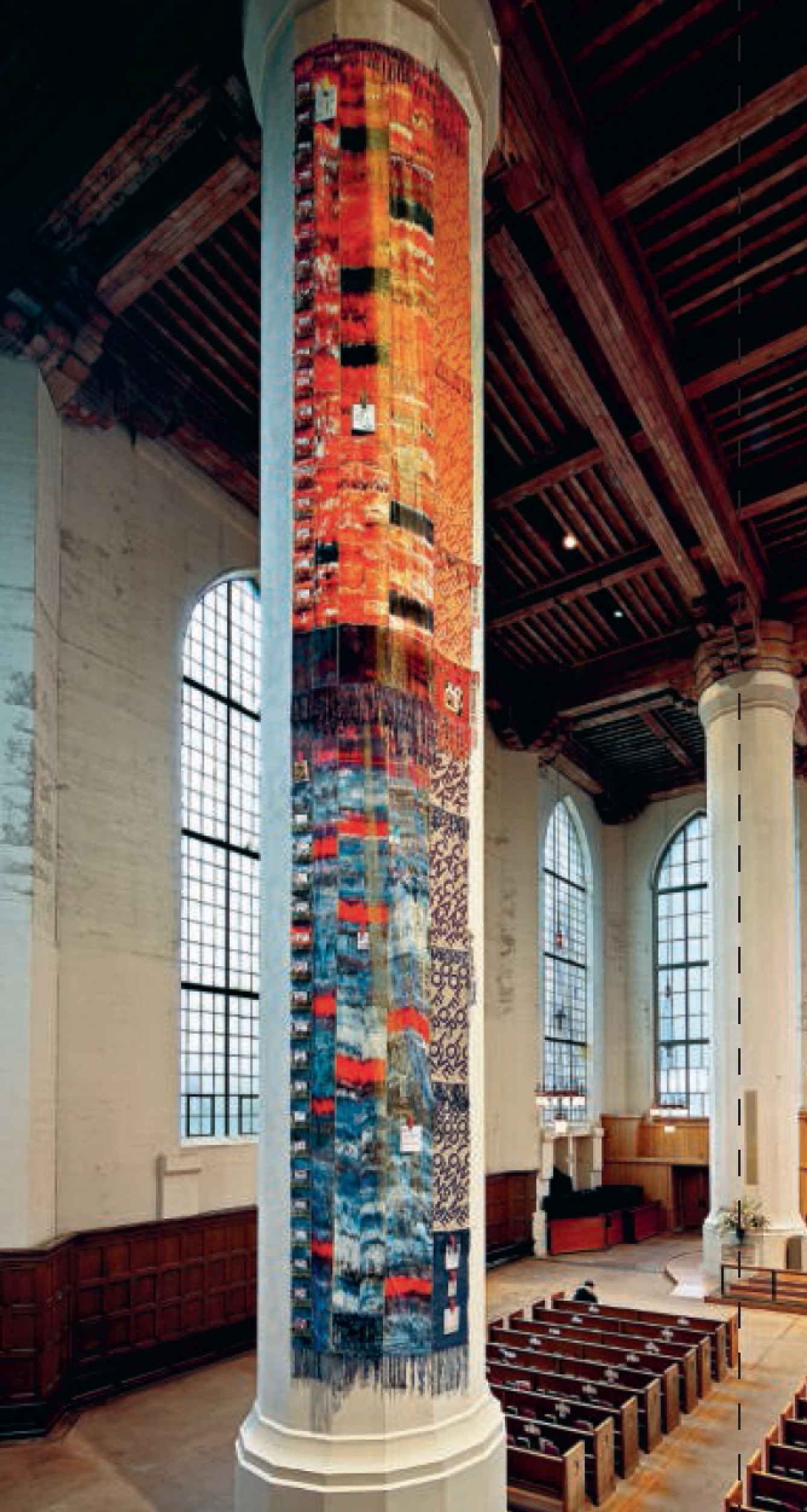
What’s next for you, and what’s next for threads and textile art? I’m fascinated by baskets and soap operas right now. Both are relatively quotidien devices but they have the ability to carry and conceal intimacy in unusual ways. Recently I discovered a trove of found videos from a long-running American soap opera. Each video is meticulous edited to trace the narrative arc of the two main gay characters within the series. We’ll see where it all goes, but in the meantime, I’ll watch them all while folding laundry.
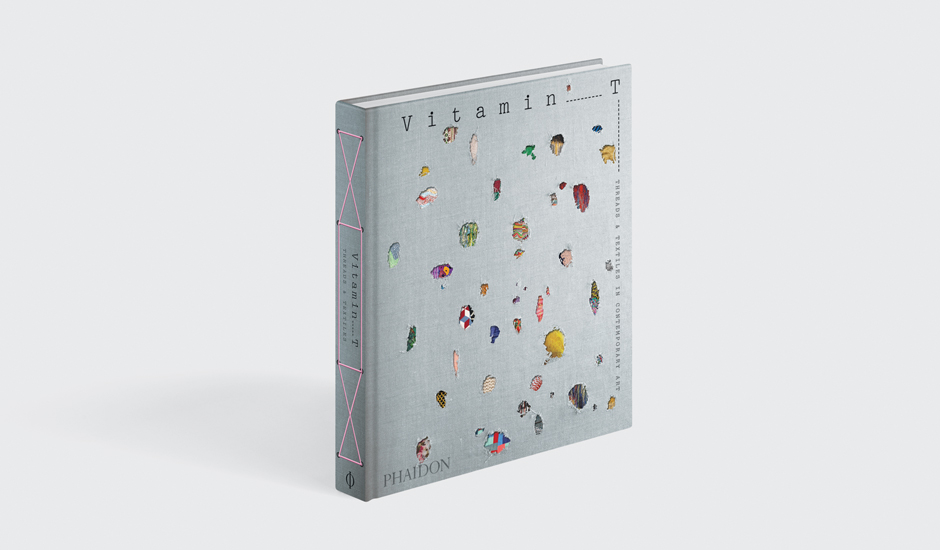
Vitamin T: Threads and Textiles in Contemporary Art is a global survey of more than 100 artists, chosen by art-world professionals for their work with threads, stitching, and textiles
Celebrating tapestry, embroidery, stitching and textiles as used by visual artists worldwide, Vitamin T is the latest in the celebrated series in which leading curators, critics, and art professionals nominate living artists for inclusion. Vitamin T: Threads and Textiles in Contemporary Art is a vibrant and incredibly timely survey – the first of its kind.